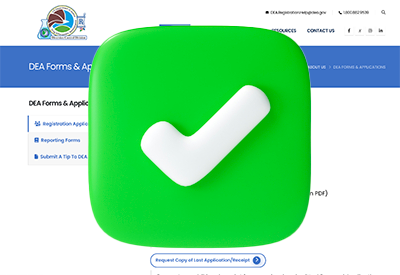Home » Antidepressant Augmentation Strategies: A Basic Guide
Antidepressant Augmentation Strategies: A Basic Guide

July 1, 2018
From The Carlat Psychiatry Report
Chris Aiken, MD
Editor-in-chief of The Carlat Psychiatry Report
Practicing psychiatrist, Winston-Salem, NC.
Here’s a common scenario. You have a patient who has tried three or four antidepressants over the years; all have been somewhat effective at least initially, but eventually that effectiveness waned.
Let’s imagine that the patient you’re seeing now is on antidepressant number 4, Lexapro, at a solid 20 mg dose. You could always keep pushing the dose, but there’s little evidence for this. You could switch to yet another antidepressant, but your intuition says it’s time to augment. Plus, recent studies have reported that augmentation outperformed placebo by 2:1 (Zhou X et al, J Clin Psych 2015;76:e487–e498), and that switching medications was no more effective than doing nothing (Bschor T et al, J Clin Psych 2018;79).
Drawing from both the literature and my own clinical experience, the following is a reasonable approach to choosing an augmentation strategy.
Atypical antipsychotics
The atypicals are the best-studied TRD augmentation agents, and among atypicals I favor aripiprazole for a couple of reasons: It has more positive trials than the other atypicals, and along with the less-well-studied risperidone, aripiprazole was one of only 2 atypicals that improved functioning and quality of life in a recent meta-analysis (Zhou X et al, Int J Neuropsychoph 2015;18:pyv060).
To avoid the most common side effect of akathisia, start low and increase slowly (eg, start with 1–2 mg daily for 7 days then 5 mg daily). Have patients start by taking it in the morning—although tell them that because it causes fatigue in about 10% of patients, they might prefer evening dosing. The 2 mg dose is no better than placebo, and aripiprazole has dose-dependent benefits (and side effects) between 5–15 mg per day. The average dose in the efficacy trials was 11 mg, but I usually allow an adequate trial at 5 mg (2–4 weeks) before raising the dose.
After aripiprazole, my choice is usually guided by side effects and costs, but the path around those side effects is rarely clear of thorns. Those with less sedation and weight gain (aripiprazole, brexpiprazole, cariprazine) tend to cause more akathisia. In the depression trials, overall tolerability was highest for risperidone and lowest for quetiapine. However, quetiapine’s low rate of akathisia and EPS makes it attractive for some patients, and risperidone’s high rate of prolactinemia is a drawback for others. Ziprasidone has the lowest risk of weight gain and metabolic effects, but the data supporting its use in augmentation are limited to a single positive trial, and ziprasidone carries additional risks of QT prolongation.
Generally, the atypicals can work with any antidepressant, although most were paired with an SSRI in the augmentation trials. One exception is olanzapine, which is FDA-approved only as an augmenter to fluoxetine in the form of OFC. Eli Lilly, which patented olanzapine and fluoxetine, sought approval for its combined OFC product in TRD rather than studying its antipsychotic for more general augmentation. That story takes an ironic turn in Zhou’s meta-analysis of atypicals in TRD, where OFC turned out to have the lowest efficacy despite being the only medication with a specific TRD indication. Zhou’s study turned up a different kind of surprise for the off-label risperidone, whose efficacy for antidepressant augmentation surpassed that of 2 FDA-approved options (quetiapine and OFC).
The efficacy of these agents is flipped in bipolar depression, where the effect size is largest for OFC and almost negligible for aripiprazole (Taylor DM et al, Acta Psychiatr Scand 2014;130:452–469). In bipolar depression, the atypicals should be used as monotherapy, except for olanzapine, which only works when combined with fluoxetine. In contrast, all of these agents require an antidepressant to work in unipolar depression, unless mixed features are part of the presentation, in which case they may work on their own—lurasidone has the best evidence for those cases (Suppes T et al, Am J Psychiatry 2016;173(4):400–407).
Lithium
After the atypicals, lithium is the second-best studied augmentation option for TRD, but I would consider it first-line in patients who are at risk for suicide. Lithium’s antisuicide effects are supported by epidemiologic data as well as controlled studies, and they are partly independent of its effects on mood. In a meta-analysis of 34 studies involving 110,000 person-years, lithium reduced the risk of suicide fivefold in recurrent unipolar depression and sixfold in bipolar disorder (Tondo L et al, Curr Psychiatry Rep 2016;18:88). A more recent case-control study has confirmed that effect and added another 410,000 life-years to the data (Song J et al, Am J Psychiatry 2017;174(8):795–802).
Lithium’s tolerability is comparable to the atypicals, and its side effects are further reduced by starting low (150–300 mg) and raising slowly (every 5 days toward 900 mg). From that point, I’ll dose by serum level (0.5–0.8 mmol/L is ideal for depression). Response should be seen in 2–6 weeks of achieving an adequate level. The controlled release versions reduce most side effects by about 50%, although they can cause more diarrhea.
Lithium’s main drawback is the risk of renal insufficiency, which is reduced by giving the entire dose at night (Gitlin M, Int J Bipolar Disord 2016;4:27). Check labs (basic chemistries, calcium, TSH, and lithium level) every 6–12 months and consult a nephrologist if the creatinine rises above 1.5. Hypothyroidism is relatively common on lithium (10%–20%), and even subclinical hypothyroidism may be worth treating. In a controlled trial of bipolar depression, lithium worked best when the TSH was maintained around 2.4 mIU/mL (Frye MA et al, Acta Psychiatr Scand 2009;120:10–13).
Thyroid
Augmenting an antidepressant with thyroid is often overlooked but well-supported by the data. Thyroid, lithium, and the atypicals were the only augmentation agents that reached statistical significance for TRD in Zhou’s meta-analysis of 48 studies. All those options carry medical risks, and in the case of thyroid, the concerns are arrhythmia, bone demineralization, and hypoglycemia (in diabetics). Thyroid augmentation is more effective in patients with subclinical hypothyroidism, but those with normal TSH levels can benefit as well.
Among the thyroid formulations, T3 (liothyronine, or Cytomel) is better studied than T4 (levothyroxine, or Synthroid) and was superior to T4 in a double-blind comparison (Joffe RT et al, Neuroendocrin Letters 1987;9:172). T3 is the more active form in the central nervous system, and some patients have difficulty converting T4 to T3. After checking a baseline thyroid panel, I will start T3 at 12.5–25 mcg/day and increase every 7 days toward a dose of 50 mcg daily. A thyroid panel should be checked at baseline and 4–6 weeks after reaching the target dose. Routine TSH can be checked every 6 months, and the dose should be lowered or discontinued if TSH < 0.5 mIU/L.
Other augmenters
Mirtazapine can reduce common serotonin side effects such as nausea, insomnia, akathisia, and sexual dysfunction, thus it is useful for augmenting serotonergic medications. Its use is backed by small studies, and a large trial is underway. L-methylfolate works preferentially in patients who are older, obese, or carry the MTHFR c-677t allele (Papakostas GI et al, J Clin Psych 2014;75:855–863).
I’ve tried many other emerging treatments, from statins to celecoxib, and the one I’ve seen the most benefit with is pramipexole. This dopaminergic agent treats both unipolar and bipolar depression with a large effect size, so it is a good choice when the diagnosis is unclear. In a small, controlled trial of TRD, it had a modest effect, and open-label data suggest it may work in cases that are resistant to ECT (Cusin C et al, J Clin Psychiatry 2013;74(7):e636–641). Outside of nausea, pramipexole is well-tolerated, with negligible effects on weight, sex drive, and cognition. The main concern with its use is pathological gambling, which can also occur with other dopamine agonists, such as aripiprazole. The gambling does not present with manic symptoms and is instead part of a spectrum of compulsive-hedonic behaviors that can happen with dopaminergics, such as shopping, masturbation, or excessively organizing the garage (Aiken C, J Clin Psych 2007;68:1230–1236).
Despite failing in research, a few augmentation strategies remain common in practice, including bupropion and the stimulants (specifically methylphenidate and lisdexamfetamine). I would use these as a last resort—I tend to take heed when manufacturer-supported trials are unable to show a benefit for their product, as was the case with these (including a large bupropion study that is unpublished). Novel stimulants (modafinil and armodafinil) have a limited role in treating apathy and fatigue, but patients usually appreciate that relief (Zhou X et al, J Clin Psych 2015;76:e487–e498).
When to stop?
I’ll attempt to slowly withdraw an augmentation agent after 3–6 months of recovery, especially if it poses medical risks. The slower the taper, the better: at least 3 months for lithium and 2–6 weeks for others.
Switching and raising the dose
Switching antidepressants is the least effective strategy in TRD but may work after 1 failed trial. Evidence supports a small benefit with switches to venlafaxine, vortioxetine, the tricyclics (especially in melancholic depression), and the MAOIs (especially in atypical depression) (Cowen PJ, Psychol Med 2017;47:2569–2577).
Raising the dose is a common strategy, especially for an antidepressant that’s become less effective over time, but controlled trials support a dose-dependent response for only a few antidepressants: MAOIs, tricyclics, bupropion, venlafaxine, mirtazapine, and vortioxetine (but not vilazodone).
What about ECT and TMS? These are beyond the scope of this article but should never be far from consideration in TRD. ECT remains the gold standard, with efficacy that surpasses that of TMS or any medication strategy (Berlim MT et al, Depress Anxiet 2013;30:614–623).
General PsychiatryLet’s imagine that the patient you’re seeing now is on antidepressant number 4, Lexapro, at a solid 20 mg dose. You could always keep pushing the dose, but there’s little evidence for this. You could switch to yet another antidepressant, but your intuition says it’s time to augment. Plus, recent studies have reported that augmentation outperformed placebo by 2:1 (Zhou X et al, J Clin Psych 2015;76:e487–e498), and that switching medications was no more effective than doing nothing (Bschor T et al, J Clin Psych 2018;79).
Drawing from both the literature and my own clinical experience, the following is a reasonable approach to choosing an augmentation strategy.
Atypical antipsychotics
The atypicals are the best-studied TRD augmentation agents, and among atypicals I favor aripiprazole for a couple of reasons: It has more positive trials than the other atypicals, and along with the less-well-studied risperidone, aripiprazole was one of only 2 atypicals that improved functioning and quality of life in a recent meta-analysis (Zhou X et al, Int J Neuropsychoph 2015;18:pyv060).
To avoid the most common side effect of akathisia, start low and increase slowly (eg, start with 1–2 mg daily for 7 days then 5 mg daily). Have patients start by taking it in the morning—although tell them that because it causes fatigue in about 10% of patients, they might prefer evening dosing. The 2 mg dose is no better than placebo, and aripiprazole has dose-dependent benefits (and side effects) between 5–15 mg per day. The average dose in the efficacy trials was 11 mg, but I usually allow an adequate trial at 5 mg (2–4 weeks) before raising the dose.
After aripiprazole, my choice is usually guided by side effects and costs, but the path around those side effects is rarely clear of thorns. Those with less sedation and weight gain (aripiprazole, brexpiprazole, cariprazine) tend to cause more akathisia. In the depression trials, overall tolerability was highest for risperidone and lowest for quetiapine. However, quetiapine’s low rate of akathisia and EPS makes it attractive for some patients, and risperidone’s high rate of prolactinemia is a drawback for others. Ziprasidone has the lowest risk of weight gain and metabolic effects, but the data supporting its use in augmentation are limited to a single positive trial, and ziprasidone carries additional risks of QT prolongation.
Generally, the atypicals can work with any antidepressant, although most were paired with an SSRI in the augmentation trials. One exception is olanzapine, which is FDA-approved only as an augmenter to fluoxetine in the form of OFC. Eli Lilly, which patented olanzapine and fluoxetine, sought approval for its combined OFC product in TRD rather than studying its antipsychotic for more general augmentation. That story takes an ironic turn in Zhou’s meta-analysis of atypicals in TRD, where OFC turned out to have the lowest efficacy despite being the only medication with a specific TRD indication. Zhou’s study turned up a different kind of surprise for the off-label risperidone, whose efficacy for antidepressant augmentation surpassed that of 2 FDA-approved options (quetiapine and OFC).
The efficacy of these agents is flipped in bipolar depression, where the effect size is largest for OFC and almost negligible for aripiprazole (Taylor DM et al, Acta Psychiatr Scand 2014;130:452–469). In bipolar depression, the atypicals should be used as monotherapy, except for olanzapine, which only works when combined with fluoxetine. In contrast, all of these agents require an antidepressant to work in unipolar depression, unless mixed features are part of the presentation, in which case they may work on their own—lurasidone has the best evidence for those cases (Suppes T et al, Am J Psychiatry 2016;173(4):400–407).
Lithium
After the atypicals, lithium is the second-best studied augmentation option for TRD, but I would consider it first-line in patients who are at risk for suicide. Lithium’s antisuicide effects are supported by epidemiologic data as well as controlled studies, and they are partly independent of its effects on mood. In a meta-analysis of 34 studies involving 110,000 person-years, lithium reduced the risk of suicide fivefold in recurrent unipolar depression and sixfold in bipolar disorder (Tondo L et al, Curr Psychiatry Rep 2016;18:88). A more recent case-control study has confirmed that effect and added another 410,000 life-years to the data (Song J et al, Am J Psychiatry 2017;174(8):795–802).
Lithium’s tolerability is comparable to the atypicals, and its side effects are further reduced by starting low (150–300 mg) and raising slowly (every 5 days toward 900 mg). From that point, I’ll dose by serum level (0.5–0.8 mmol/L is ideal for depression). Response should be seen in 2–6 weeks of achieving an adequate level. The controlled release versions reduce most side effects by about 50%, although they can cause more diarrhea.
Lithium’s main drawback is the risk of renal insufficiency, which is reduced by giving the entire dose at night (Gitlin M, Int J Bipolar Disord 2016;4:27). Check labs (basic chemistries, calcium, TSH, and lithium level) every 6–12 months and consult a nephrologist if the creatinine rises above 1.5. Hypothyroidism is relatively common on lithium (10%–20%), and even subclinical hypothyroidism may be worth treating. In a controlled trial of bipolar depression, lithium worked best when the TSH was maintained around 2.4 mIU/mL (Frye MA et al, Acta Psychiatr Scand 2009;120:10–13).
Thyroid
Augmenting an antidepressant with thyroid is often overlooked but well-supported by the data. Thyroid, lithium, and the atypicals were the only augmentation agents that reached statistical significance for TRD in Zhou’s meta-analysis of 48 studies. All those options carry medical risks, and in the case of thyroid, the concerns are arrhythmia, bone demineralization, and hypoglycemia (in diabetics). Thyroid augmentation is more effective in patients with subclinical hypothyroidism, but those with normal TSH levels can benefit as well.
Among the thyroid formulations, T3 (liothyronine, or Cytomel) is better studied than T4 (levothyroxine, or Synthroid) and was superior to T4 in a double-blind comparison (Joffe RT et al, Neuroendocrin Letters 1987;9:172). T3 is the more active form in the central nervous system, and some patients have difficulty converting T4 to T3. After checking a baseline thyroid panel, I will start T3 at 12.5–25 mcg/day and increase every 7 days toward a dose of 50 mcg daily. A thyroid panel should be checked at baseline and 4–6 weeks after reaching the target dose. Routine TSH can be checked every 6 months, and the dose should be lowered or discontinued if TSH < 0.5 mIU/L.
Other augmenters
Mirtazapine can reduce common serotonin side effects such as nausea, insomnia, akathisia, and sexual dysfunction, thus it is useful for augmenting serotonergic medications. Its use is backed by small studies, and a large trial is underway. L-methylfolate works preferentially in patients who are older, obese, or carry the MTHFR c-677t allele (Papakostas GI et al, J Clin Psych 2014;75:855–863).
I’ve tried many other emerging treatments, from statins to celecoxib, and the one I’ve seen the most benefit with is pramipexole. This dopaminergic agent treats both unipolar and bipolar depression with a large effect size, so it is a good choice when the diagnosis is unclear. In a small, controlled trial of TRD, it had a modest effect, and open-label data suggest it may work in cases that are resistant to ECT (Cusin C et al, J Clin Psychiatry 2013;74(7):e636–641). Outside of nausea, pramipexole is well-tolerated, with negligible effects on weight, sex drive, and cognition. The main concern with its use is pathological gambling, which can also occur with other dopamine agonists, such as aripiprazole. The gambling does not present with manic symptoms and is instead part of a spectrum of compulsive-hedonic behaviors that can happen with dopaminergics, such as shopping, masturbation, or excessively organizing the garage (Aiken C, J Clin Psych 2007;68:1230–1236).
Despite failing in research, a few augmentation strategies remain common in practice, including bupropion and the stimulants (specifically methylphenidate and lisdexamfetamine). I would use these as a last resort—I tend to take heed when manufacturer-supported trials are unable to show a benefit for their product, as was the case with these (including a large bupropion study that is unpublished). Novel stimulants (modafinil and armodafinil) have a limited role in treating apathy and fatigue, but patients usually appreciate that relief (Zhou X et al, J Clin Psych 2015;76:e487–e498).
When to stop?
I’ll attempt to slowly withdraw an augmentation agent after 3–6 months of recovery, especially if it poses medical risks. The slower the taper, the better: at least 3 months for lithium and 2–6 weeks for others.
Switching and raising the dose
Switching antidepressants is the least effective strategy in TRD but may work after 1 failed trial. Evidence supports a small benefit with switches to venlafaxine, vortioxetine, the tricyclics (especially in melancholic depression), and the MAOIs (especially in atypical depression) (Cowen PJ, Psychol Med 2017;47:2569–2577).
Raising the dose is a common strategy, especially for an antidepressant that’s become less effective over time, but controlled trials support a dose-dependent response for only a few antidepressants: MAOIs, tricyclics, bupropion, venlafaxine, mirtazapine, and vortioxetine (but not vilazodone).
What about ECT and TMS? These are beyond the scope of this article but should never be far from consideration in TRD. ECT remains the gold standard, with efficacy that surpasses that of TMS or any medication strategy (Berlim MT et al, Depress Anxiet 2013;30:614–623).
KEYWORDS antidepressants free_articles

Issue Date: July 1, 2018
Table Of Contents
Recommended
Newsletters
Please see our Terms and Conditions, Privacy Policy, Subscription Agreement, Use of Cookies, and Hardware/Software Requirements to view our website.
© 2025 Carlat Publishing, LLC and Affiliates, All Rights Reserved.


_-The-Breakthrough-Antipsychotic-That-Could-Change-Everything.jpg?1729528747)



